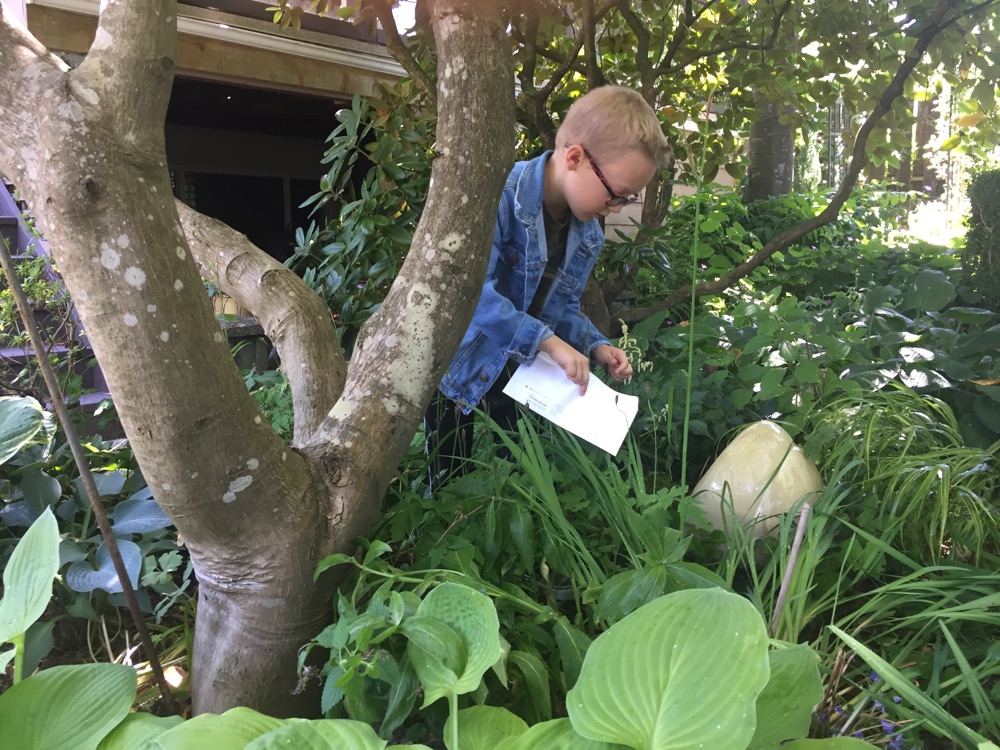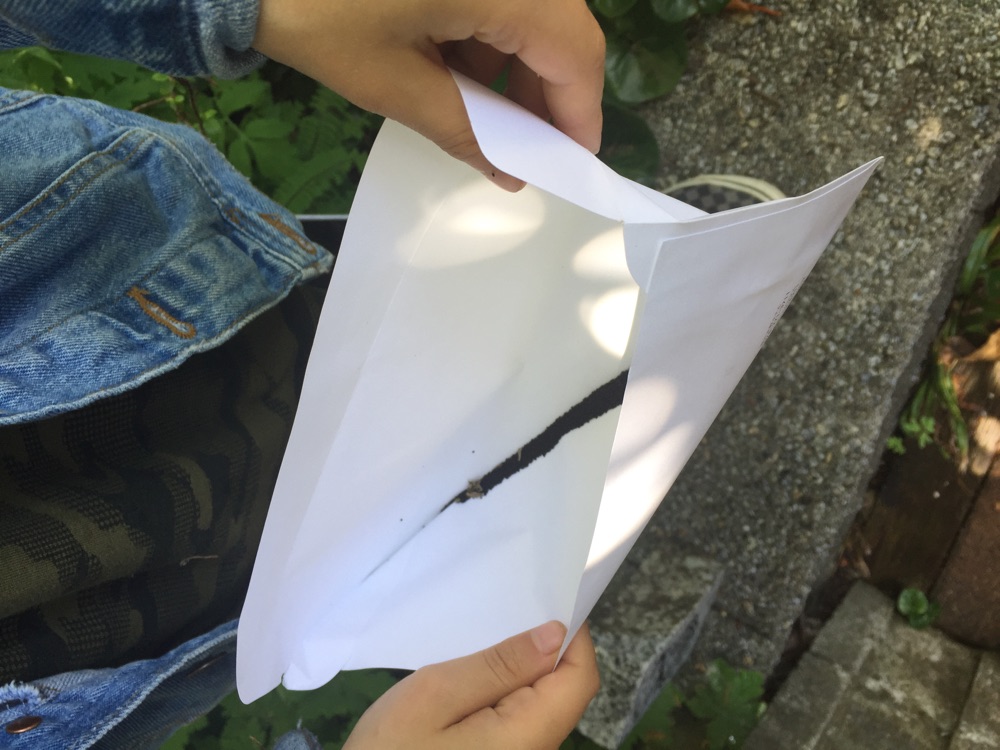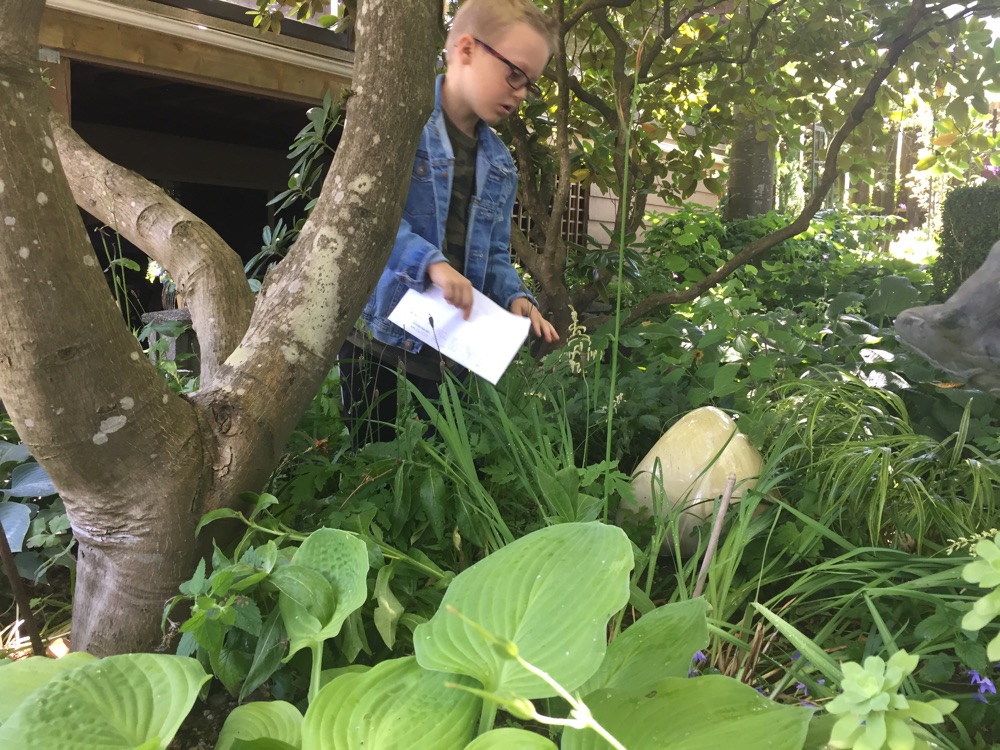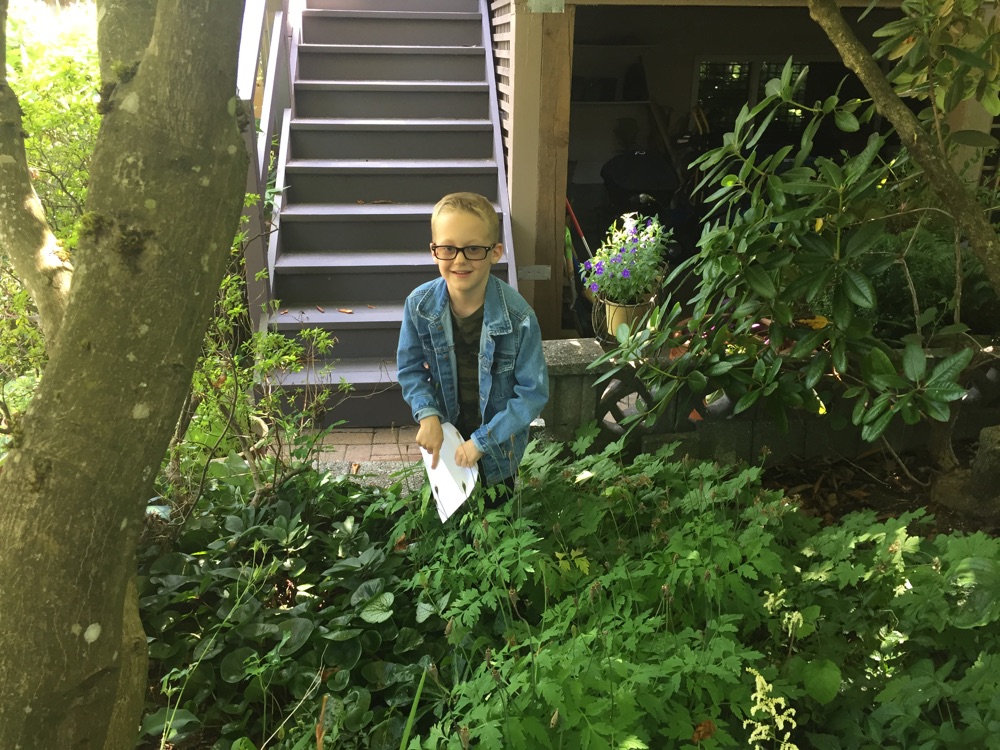
Seed-collecting is a wonderful way to get more plants for your garden for free and the best way to make sure they are evenly distributed.
This week, we collected hundreds of aquilegia seeds as well as thousands of Welsh poppy seeds and bluebell seeds.
In a few weeks, it will be time to collect foxglove seeds and then redistribute them into corners and spots where they have yet to find a home.

A big pleasure was showing my grandson Jake how to collect the seeds by gently bending the faded flower stalks over and allowing the black seeds to empty into an envelope.
CHILD’S PLAY
Once he got the idea, there was no stopping him. He wanted to see how many seeds he could collect. I just sat in my patio chair and watched him move like a bee from one seed pod to another, exclaiming with joy every now and then how he had found a pod with a heavy load of seeds.

“Wow, Grandad, you should see how many they were in that one! Amazing.”
I told him that we will be busy in a month or so when it comes time to collect foxglove seeds.
BETTER DISPERSAL
Yes, we could just let them fall naturally and allow the wind to blow them where it will. But by collecting the seeds, it gives us a little more control over where they end up and how many germinate in one spot.

We can also save some seeds for sowing in pots to give us plants for giving as gifts or to place where we need them when we see how many of the others have germinated.
Some plants such as lady’s mantle or yellow corydalis spread long before we can give our permission – they are so promiscuous, they throw their seeds into the breeze weeks before we realize it. I find the same is true of most euphorbias. They seem to distribute seed long before I am aware of it being ripe to collect.
Still, it is fun collecting seeds at this time of year and I think it is something we can easily teach kids to do. Judging by Jake’s reactions, they will enjoy it and it will be a skill they won’t forget.

















